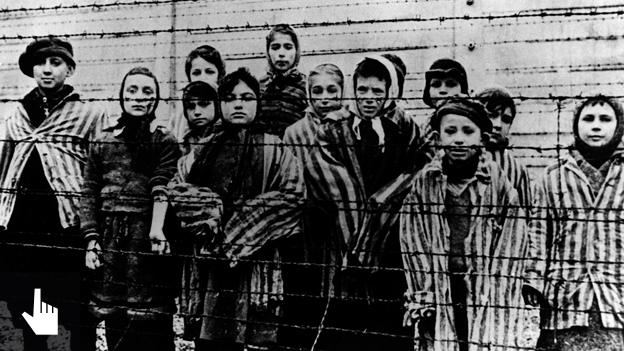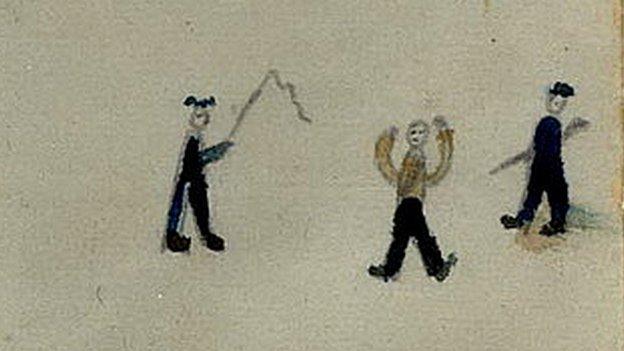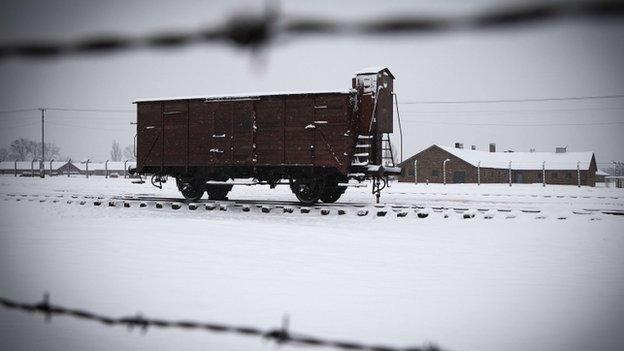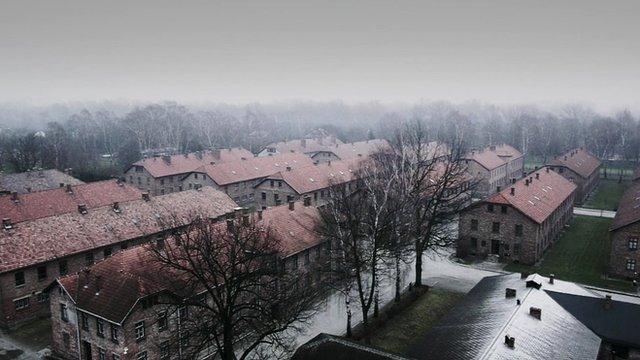Auschwitz overshadows life in Polish Oswiecim
- Published
The Polish city of Oswiecim is better known by its German name, Auschwitz. Seventy years after the Holocaust, life in Oswiecim goes on. But it cannot entirely escape its associations with one of the most infamous war crimes in history.
- ×
-
Death on the doorstep
×During the war Oswiecim was under Nazi occupation, camp life seeped onto the streets of the town. Prisoners were everywhere, forced into public works. With the SS controlling every aspect of local life, ordinary townspeople also lived in fear. But many did all they could in secret to alleviate the suffering of the prisoners.
-
Working in the shadow of genocide
×With 1.1m visitors a year Auschwitz-Birkenau camp should be an important part of the economy in Oswiecim but few visitors actually come to the town. Many of the people working there come from other parts of Poland. It's not an easy job, they live and work every day in the shadow of mass murder.
-
The other genocide
×Roman Kwiatkowski is the leader of Poland's Romani community. He grew up in Oswiecim. It's often overlooked that 23,000 Romani were killed in Auschwitz. They lived in separate blocks called Zigeunerlager. But after the Holocaust, persecution of Romani didn't end.
-
Manufacturing death
×The chemical factory in Oswiecim is the biggest employer in town, but it has a dark history. Better known as Buna-Werks it was built in 1942 by the Nazis. It was a forced labour camp run by IG Farben, the company that made Zyklon B gas, used in the gas chambers.
'The history of the factory is painful of course,' says Marek, 34. He has been working in the plant for 14 years. His grandparents worked there too. 'But we have to differentiate between Auschwitz and Oswiecim. Life goes on. Oswiecim is a normal city, where people live and work.'
-
The legacy of hate
×Before the Holocaust, Oswiecim was 60% Jewish. Now there are no Jewish families living here. The Jewish Museum in the centre of town was set up to remember the towns rich Jewish history. And to remind people here how easily this could all happen again. It hosts training programmes on hate-crimes for Polish police.
-
Life in the town of Os
×American photographer Danny Ghitis spent six months in Oswiecim in 2014. The grandson of a Holocaust survivor, he was fascinated by the connection between town and camp. He explored this in a series of fascinating photographs currently being exhibited in the Jewish museum.
- Published27 January 2015

- Published26 January 2015

- Published27 January 2015

- Published27 January 2015

- Published26 January 2015
